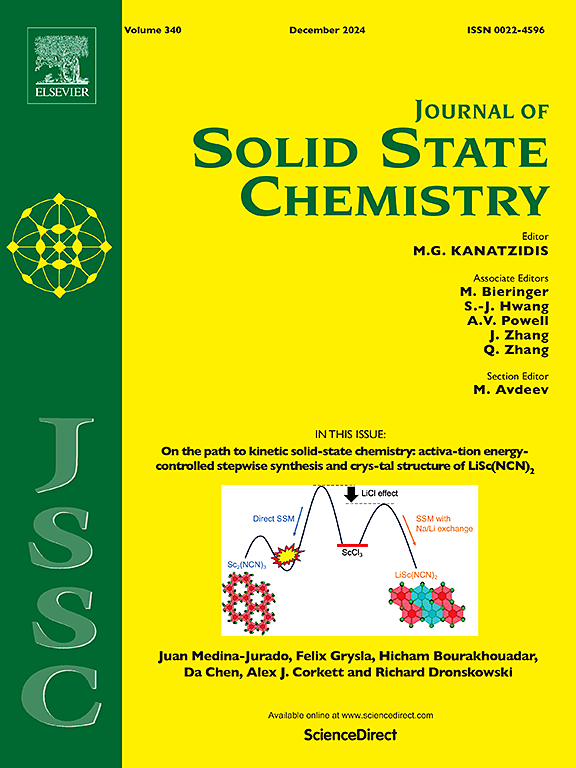Chemical clipping-driven electronic structure modulation in bimetallic Fe/Ni-MOFs for enhanced oxygen evolution reaction
IF 3.2
3区 化学
Q2 CHEMISTRY, INORGANIC & NUCLEAR
引用次数: 0
Abstract
Bond breaking has become an innovative approach for post-synthetic modification of pore structures in metal–organic frameworks, enabling the creation of pore environments that cannot be achieved through conventional methods. Herein, a series of hierarchical porous bimetallic MOF-based electrocatalysts were prepared through an advanced chemical clipping technique, involving the introduction of Fe and selective removal of Ni centers to tailor the porosity of the Ni-BTC frameworks (HP-Nix/Fe100-x-BTC, BTC = 1,3,5-trimesic acid). By controlling the concentration of 2-methylimidazole, the crystallographic morphology of HP-Fe50/Ni50-BTC we precisely regulated, enabling the formation of complex polyhedral structures such as octahedra, truncated tetrahedra and regular tetrahedra. The electrocatalytic oxygen evolution efficiency was significantly increased and the current density was enhanced through structure modulation. The optimized HP-Fe50/Ni50-BTC-1 constructs achieved substantially lower OER overpotentials reached as low as 258 mV and Tafel slopes of 48.79 mV dec−1. Additionally, these materials demonstrated robust stability, maintaining performance over 35 h under operational conditions. Furthermore, density functional theory (DFT) calculations reveal that the modulated d-band center of HP-Fe50/Ni50-BTC-1 directs the flow of electrons, resulting in the enhancement the rate-determining step, and improves the adsorption capacity for intermediates during the oxygen evolution reaction (OER). These findings underscore the transformative potential of precise molecular engineering in metal-organic frameworks, advancing the paradigm of catalyst design by enabling microstructural control to optimize electrochemical properties.

求助全文
约1分钟内获得全文
求助全文
来源期刊

Journal of Solid State Chemistry
化学-无机化学与核化学
CiteScore
6.00
自引率
9.10%
发文量
848
审稿时长
25 days
期刊介绍:
Covering major developments in the field of solid state chemistry and related areas such as ceramics and amorphous materials, the Journal of Solid State Chemistry features studies of chemical, structural, thermodynamic, electronic, magnetic, and optical properties and processes in solids.
 求助内容:
求助内容: 应助结果提醒方式:
应助结果提醒方式:


